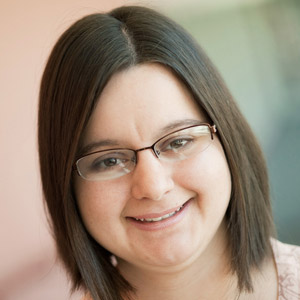
My Journey to Becoming a Teacher-Scientist
Brittany Franckowiak, Science Teacher, Wilde Lake High School
Becoming a scientist came relatively easy for Ms. Franckowiak. Becoming a teacher-scientist was a much greater challenge. Experience the journey she took to the classroom where she found she had always belonged.
Video Transcript
Science came first: animals, dinosaurs, DNA, space. The usual suspects.
By high school I’d fallen pretty hard for biology. I thought I’d be a bioengineer, or an epidemiologist, until about midway through my sophomore year of high school when I realized actually, I’d be a teacher. A biology teacher. It wasn’t really a decision– it felt out of my control, like a reality that I uncovered. It seemed sort of inevitable. I began to direct all of my plans and energy and talent into training myself to be a good science teacher. I don’t really believe in vocation or in fate, but teaching was always in front of me somehow. It’s true that I could have done anything; I was the salutatorian of my high school class and I had a full tuition academic scholarship for my undergraduate at the University of Pittsburgh.
My peers applied to and got into schools of engineering and public policy, declaring pre-med courses of study and dreaming about future research jobs. I looked forward to my future classroom.
I didn’t pursue teaching because I couldn’t “do science.” Without a scientist’s identity myself, how could I expect to cultivate one in my future students? My undergraduate is a B.S., not in science education, but in biological sciences. I worked in the structural biochemistry lab, a molecular genetics lab, and I have participated in ecological fieldwork. As I scienced, I taught and I tutored. I worked in the writing center consulting on virology dissertations. I taught lab sections and recitations for Intro Bio. I supported our summer genetics research for high school students, teaching teenagers how to pipette and purify DNA and streak bacteria and run gels. Everything I pursued was in the interest of my future students.
Developing my scientific skills and knowledge felt urgent; I needed to understand in order to teach.
As graduation approached I watched my peers disperse– med school, PhD programs, public health programs, pharmacy school, law school– and I submitted a single application to the Master of Arts in Teaching Secondary Science program at Pitt. When I got my acceptance letter, it hardly felt worth celebrating. As everyone pointed out, there was never any chance I wouldn’t get in–it was a school of education. It wasn’t like it was very hard.
It might be true that getting in wasn’t hard; the course work wasn’t really hard either, not after the years of a double major and minor in three different departments. My dedication in biology had paid off; I didn’t feel pressured to learn much content. My second major in English had paid off too; the writing I had to do came easy. Teaching, though? Teaching was hard.
Planning and leading my first lab lesson during student teaching was much more difficult than learning how to run a spectrophotometer had been.
We didn’t have running water in the classroom and my mentor teacher paid for lab supplies out of her pocket. We measured yeast respiration; five times in five hours I managed to wrangle twenty-five high school freshman though a protocol, most of whom didn’t want to be there, had never done a lab before, and saw no reason to pay any attention to what they were doing. I spent hours revising and writing the lab lesson, hours delivering it, and realized that I’d also be spending hours grading the student analysis. And I didn’t even feel successful. I learned that my expertise alone was not sufficient for success in the classroom. More importantly, I learned that I didn’t even know what I needed to learn. That year of student teaching was a year of failure after failure after failure. And I’d never really failed before.
But as I failed, I slowly developed a philosophical approach to lesson planning. First, what knowledge do my students need to walk away with? That sounds simple; it’s what we call a “content objective.” But that’s the piece of the puzzle I got from my M.A.T. program. And it’s not always easy to pin down. Second, how do scientists know this content? How was that knowledge originally generated? This was where my scientist training really paid off, because I knew those stories, I knew those research techniques, I knew what the data looked like, how it had been collected, what trends mattered. I knew how those trends were translated into claims and knowledge. Once I figured out what students needed to know and reflected on how science had originally generated that knowledge, I could get into the final, most interesting, most challenging part. How could the students explore the content like scientists? This creative puzzle gave me a great deal of intellectual satisfaction. It was difficult and interesting and not unlike designing a scientific investigation. I found and fabricated data sets, I created simulations and wrote up lab protocols. A lot of it didn’t work, but parts of some of it did, and by the end of student teaching, I could objectively look at the stuff I had built and recognize that there were some glimmers of potential in the way that I was thinking and writing.
I’ve had my own lab for seven years now. In my lab, I explore both science and teaching.
I still fail, but those failures now seem like the exception rather than the rule. Teaching is still hard, still demanding, still exhausting, but I know more now. I know more about how to get students to buy in. I’ve learned to pay more attention to relationships and to allow my students room to express themselves. I’m better at guiding students through challenging tasks, better at providing feedback, better at relating to my students as people.
Together, my students and I do science. We grow plants and bacteria and fungi, we use microscopes and spreadsheets and pipettes, we make models and write arguments and describe trends. Behind the scenes I put my scientific knowledge and skills to work building authentic learning experiences for my kids. It’s been a pleasant surprise to realize that even as I teach, I can still be an active student of biology.
I’m not a scientist. I’m a teacher-scientist, and no work could be more challenging or more worthwhile.
Related Stories
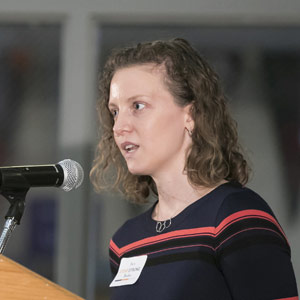
Why I Share My Story
Molly, Math Teacher - Murray Hill MS
Molly has used StoryStrong Math for both reflecting deeply on herself but also in working with her students.
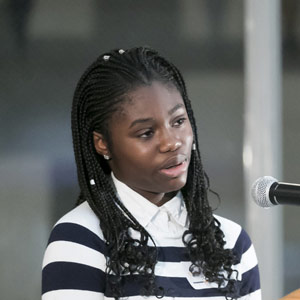
My Math Story and Identity
Angel, Murray Hill MS, Class of 2022
Angel is an 8th grade student at Murray Hill Middle School who shares her journey to discovering her own math identity.
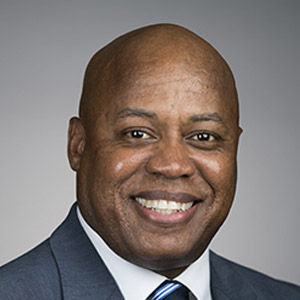
Two People Who Changed My Path
James LeMon, Executive Director of Community, Parent and School Outreach
From a cafeteria worker to a football coach, you never know who will be that person that will impact a child and change their lives.
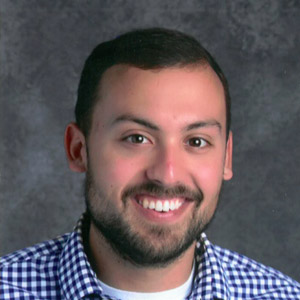
Teaching is More Than a Job, It’s a Calling
Niklas Berry, Social Studies Teacher, Oakland Mills HS
Growing up in multiple cultures, Mr. Berry's students left him wondering if he chose to be a teacher or if there were deeper cultural reasons for his choice profession.

